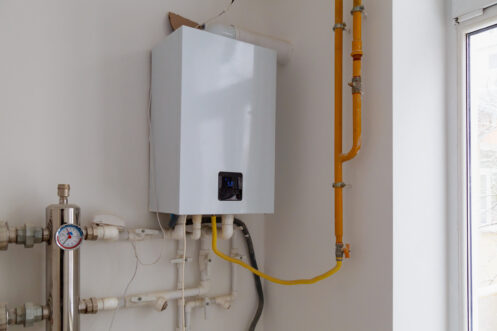Professional Tips on Maintaining Your Home's Hot Water System
Professional Tips on Maintaining Your Home's Hot Water System
Blog Article
Just how do you really feel with regards to Tips For Maintaining Your Hot Water Heater?
:max_bytes(150000):strip_icc()/how-to-drain-a-water-heater-2719055-hero-35f0548b0f1f42f0b13ba96a33ab8da2.jpg)
Warm water is necessary for everyday comfort, whether it's for a rejuvenating shower or washing dishes. To ensure your warm water system runs successfully and lasts much longer, regular maintenance is vital. This post provides practical ideas and understandings on exactly how to keep your home's warm water system to prevent interruptions and costly repairs.
Intro
Preserving your home's hot water system might appear overwhelming, yet with a few simple actions, you can guarantee it operates smoothly for several years to find. This guide covers every little thing from comprehending your hot water system to do it yourself maintenance tips and recognizing when to employ expert help.
Relevance of Preserving Your Hot Water System
Routine upkeep not only expands the life expectancy of your warm water system but additionally ensures it runs efficiently. Ignoring upkeep can result in lowered efficiency, greater energy expenses, and also premature failing of the system.
Indicators Your Hot Water System Demands Maintenance
Understanding when your warm water system needs interest can prevent major concerns. Look out for indications such as irregular water temperature, odd sounds from the heater, or rustic water.
Recognizing Your Hot Water System
Before diving right into upkeep tasks, it's practical to recognize the basic elements of your warm water system. Typically, this includes the hot water heater itself, pipelines, anode rods, and temperature controls.
Regular Monthly Upkeep Tasks
Normal month-to-month checks can aid capture small concerns before they intensify.
Purging the Hot Water Heater
Purging your hot water heater eliminates debris accumulation, enhancing effectiveness and extending its life.
Monitoring and Replacing Anode Rods
Anode rods avoid rust inside the storage tank. Examining and replacing them when worn out is crucial.
Inspecting and Adjusting Temperature Setups
Readjusting the temperature level setups makes sure ideal performance and safety.
DIY Tips for Upkeep
You can execute numerous upkeep tasks yourself to keep your warm water system in leading problem.
Checking for Leaks
Regularly inspect pipelines and links for leaks, as these can result in water damage and greater expenses.
Evaluating Pressure Relief Valves
Examining the stress relief valve ensures it operates appropriately and stops excessive pressure build-up.
Protecting Pipes
Shielding warm water pipes reduces warmth loss and can conserve energy.
When to Call a Specialist
While DIY maintenance is valuable, some problems require specialist know-how.
Complex Concerns Needing Professional Aid
Instances include significant leaks, electrical issues, or if your water heater is constantly underperforming.
Routine Specialist Maintenance Benefits
Expert maintenance can include thorough assessments, tune-ups, and ensuring conformity with safety and security requirements.
Verdict
Routine upkeep of your home's warm water system is essential for performance, longevity, and expense savings. By adhering to these tips and recognizing when to seek specialist help, you can make sure a dependable supply of warm water without unexpected disturbances.
Water Heater Maintenance Tips
Test the TPR Valve
Shut off the power and the cold-water supply valve. Place a bucket under the pipe connected to the temperature-pressure-release (TPR) valve on the top or side of the tank. (This valve opens if the tank pressure gets too high.) Lift the valve’s tab to let some water out, then let go. If water keeps flowing, drain the tank partway, unscrew the old valve with a pipe wrench, and install a new one. Check the Anode Rod
Put a hose to the tank’s drain cock and let out a few gallons of water. Now fit a 1 1/16-inch socket onto the rod’s hex head on top of the heater (or under its top plate) and unscrew the rod. If it’s less than ½ inch thick or coated with calcium, buy a new one, wrap its threads with Teflon tape, put it back in the tank, and tighten securely. Use this segmented rod if headroom above the tank is limited. Drain the Tank and Wash Out Sediment
Drain the remaining water in the tank into the bucket, then stir up the sediment on the tank’s bottom by briefly opening the cold-water supply valve. Drain and repeat until clean water comes out of the hose. Close the drain cock, refill the tank, and turn its power back on. Adjust the Temperature
Find the temperature dial on the side of the tank and unscrew its cover. Adjust the dial to 120 degrees using a flathead screwdriver. For every 10 degrees the temperature is lowered, you can expect to save up to 5 percent in energy costs. Turn the water heater off or the thermostat down to its lowest setting if you plan to be away from home for more than three days. Insulate the Pipes
Buy some self-sticking 3/8-inch-thick foam pipe insulation that matches the pipes’ diameter. Slide the foam over the hot-and cold-water pipes as far as you can reach. Insulating the cold-water pipe prevents condensation in summer. Peel the tape and squeeze the insulation closed. If the pipe is 6 inches or less from the flue, cover it with 1-inch-thick unfaced fiberglass pipe wrap. https://www.thisoldhouse.com/plumbing/21016402/how-to-maintain-a-water-heater

As a passionate reader about Tips For Maintaining Your Hot Water Heater, I thought sharing that piece of content was necessary. Do you know about anybody else who is inquisitive about the niche? Feel free to promote it. We treasure reading our article about Water Heater Maintenance Tips You Can't Afford to Forget.
Make An Appointment Report this page